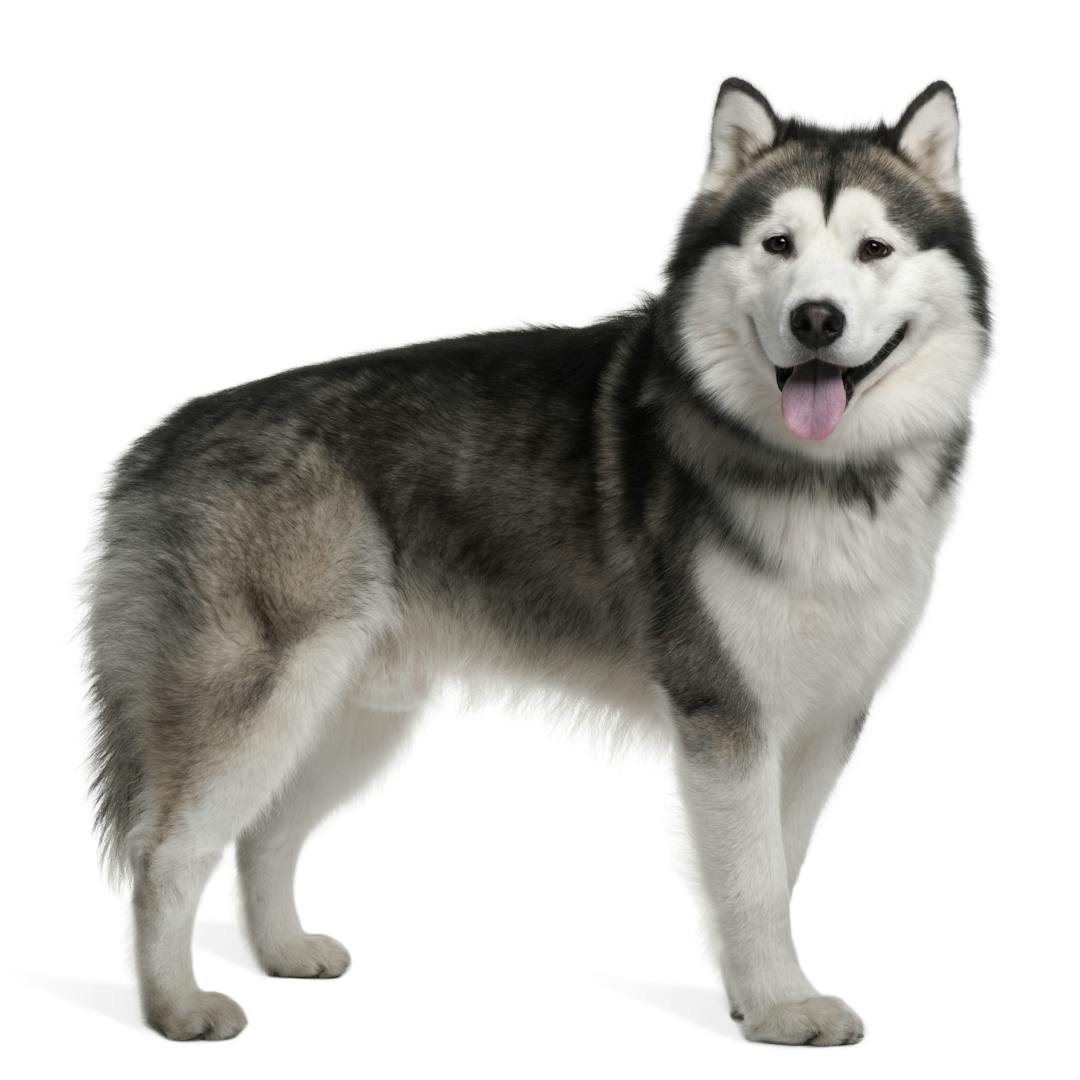
Alaskan Malamute
The Alaskan Malamute is a large breed of domestic dog originally bred for their strength and endurance to haul heavy freight as a sled dog. They are similar to other arctic breeds, like the Greenland dog, Canadian Eskimo Dog, the Siberian Husky, and the Samoyed. They are believed to be one of the oldest breeds involved in this sport in the Arctic. The Alaskan Malamute was named after the native Inuit tribe called the Mahlemuts, who settled in Alaska. They have been used for centuries by these native people to pull sleds, hunt seals, and chase away polar bears. This breed was shaped by the difficult climate of the Arctic region, like many breeds in the spitz family.
- Origin
- Northwestern Alaska
- Alternate Names
- Mals
- Life Expectancy
- 10-14 years
- Average Male Height
- 25 inches
- Average Female Height
- 23 inches
- Average Male Weight
- 85 pounds
- Average Female Weight
- 75 pounds
- Coat Length
- Medium
- Coat Type
- Double
- Coat Colors
- Agouti & White, Black & White, Blue & White, Gray & White, Red & White, Sable & White, Seal & White, Silver & White, White
- Coat Pattern
- Black Mask, Gray Mask
Genetic Predispositions and Health
Alaskan Malamutes can suffer from hip and elbow dysplasia, dwarfism, hypothyroidism, day blindness, von Willebrand's disease, and inherited polyneuropathy. They may also suffer from gastric torsion, hemeralopia, seizures, cataracts, and osteochondrodysplasia. Genetic testing for polyneuropathy, cone degeneration, and degenerative myelopathy can assist veterinarians with diagnosis and proactive care, as well as help breeders identify affected and carrier dogs.
Personality and Behavior
Alaskan Malamutes are known to be affectionate, loyal, and playful dogs. They are friendly and sociable, which can make them less suitable as guard dogs. They are excellent family dogs and can be very good with children. However, due to their original breeding purposes, they have a high energy level and require a substantial amount of exercise to keep them happy and healthy.
While they are generally friendly, they can be aggressive or dominant towards other dogs of the same sex. They are intelligent dogs, but they have an independent streak, which can make training a challenge at times. Alaskan Malamutes have a strong prey drive due to their hunting origins, so they need to be supervised around small animals.
They are known to be vocal and will often "talk" or howl, especially when bored or left alone for long periods. Alaskan Malamutes do not generally make good apartment dogs, as they are active and need space to run and play. Alaskan Malamutes have a waterproof double coat that helped them to adapt to the harsh Arctic climate. The coat needs consistent brushing every week. They shed twice a year and will need extra brushing during those times. The coat can harbor fungus which can become infected and should be checked regularly.
Fun Facts
The Alaskan Malamute played a significant role during the Gold Rush in the late 1800s, and they served in World War II primarily as search and rescue dogs.
Alaskan Malamutes are considered a foundational breed to the modern sled-dog sport.
The breed was officially recognized by the American Kennel Club (AKC) in 1935.
References
https://www.akc.org/dog-breeds/alaskan-malamute/
https://www.pawprintgenetics.com/products/breeds/90/
https://www.petmd.com/dog/breeds/c_dg_alaskan_malamute
O’Neill, D. G., Church, D. B., McGreevy, P. D., Thomson, P. C., & Brodbelt, D. C. (2013). Longevity and mortality of owned dogs in England. The Veterinary Journal, 198(3), 638–643. https://doi.org/10.1016/j.tvjl.2013.09.020
The Alaskan Malamute Club of America. "Is an Alaskan Malamute Right for You?" https://www.alaskanmalamute.org/is-an-alaskan-malamute-right-for-you/